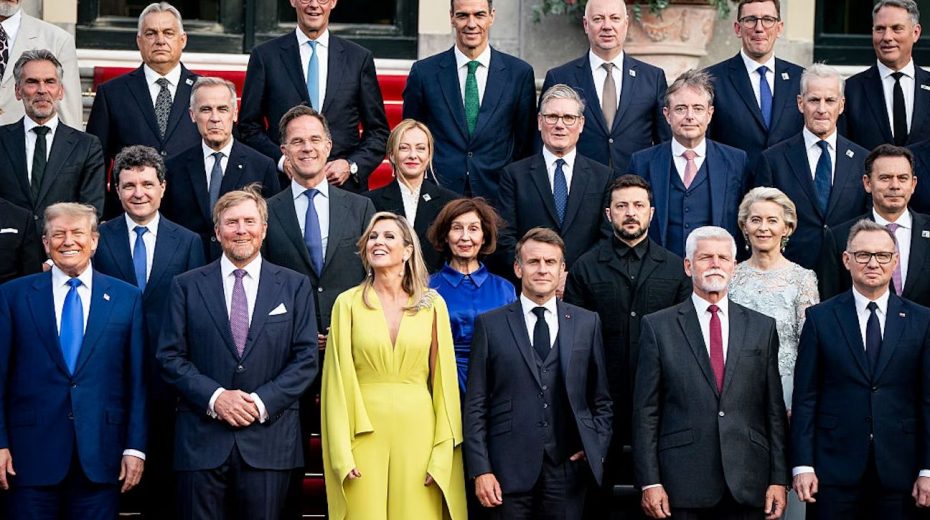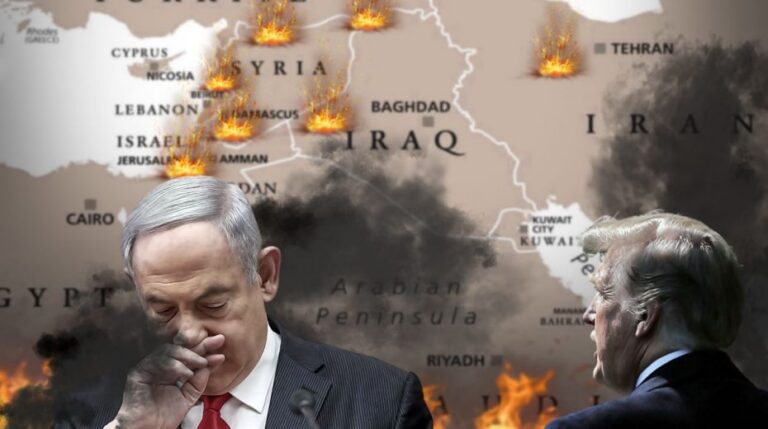
Do European and American policymakers want a real war with Russia?
The North Atlantic Treaty Organization experienced its moment of prominence over forty years ago. In the 1950s, the U.S. provided what was meant to be a temporary military shield allowing Western Europe’s war-torn nations to rebuild their economies. Although, in hindsight, it seems unlikely that Joseph Stalin’s Soviet Union intended to launch a conquest, no one trusted the threat it posed.
Regrettably, even as Europe recovered and Germany was integrated into NATO, the United States remained. This contravened the assurances from the alliance’s founders that the American military presence would be a short-term solution until European members assumed responsibility for their own defense. Nearly eighty years after World War II ended, 600 million Europeans still rely on 340 million Americans to protect them against 140 million Russians.
Despite widespread frustration expressed by numerous American officials regarding Europe’s inertia, Europeans remain heavily reliant on Washington for their protection—even during the Trump era. President Donald Trump’s outbursts led U.S. allies to stage complex deceptions to persuade him they were complying with his directives. However, the recently introduced target of 5 percent of GDP for defense spending permits 1.5 percent to be devoted to civilian uses and only takes effect after Trump’s tenure. It is anticipated that European nations will lobby for a revision of this NATO standard.
Given growing social unrest and political volatility across Europe, major and steady rises in defense budgets seem unlikely. Traditional ruling parties are losing ground, and governments across the region are unstable. Last month, NBC reported, “For the first time in modern history, far-right and populist parties are simultaneously topping the polls in Europe’s three main economies of Germany, France and Britain.” Italy and Slovakia are shifting toward right-wing nationalism, while established parties face challenges in Belgium, Czechia, the Netherlands, Spain, and Sweden.
Still, many of these governments seem willing to engage in war with Russia—which would inevitably involve American troops due to NATO’s structure. Supporters point to border incursions, alleged drone and balloon flights threatening commercial flights, and suspicion of sabotage operations. European officials, often led by hawkish Poland and Baltic states, ominously warn of the necessity to confront Moscow. Former U.S. NATO ambassador Ivo Daalder declared: “Russia is at war with Europe. It has been waging an overt war in Ukraine for over a decade now, and with increasing ferocity since its full-scale invasion in 2022. But the fighting in Ukraine is only part of Russia’s wider war against Europe as a whole.”
There is no question Russia is engaged in European affairs, yet attributing all hostile acts to Moscow disregards Europe’s own long-standing tendencies toward conflict. Since World War II, even democratic countries there have endured military coups, internal wars, separatist movements, terrorism, assassinations, mass demonstrations, social tensions, and extremist politics. Conveniently blaming Vladimir Putin allows European bureaucrats to avoid addressing internal problems, promote aggressive foreign policies, and shift responsibility for the destructive war in Ukraine.
The latter point, avoiding accountability for the ongoing war, is particularly significant and perilous for the U.S. Putin chose to wage war on Ukraine, initiating a brutal campaign causing tens or hundreds of thousands of fatalities. Russia did not face an immediate security threat justifying such an invasion. However, the West is partly responsible. Allied arrogance and dismissiveness—purposefully ignoring Moscow’s security concerns and military warnings—prompted Putin’s decision, which reflected widespread Russian elite and popular antagonism toward the West following its post-Cold War conduct.
More critically, Putin’s offensive against Ukraine was never primarily aimed at Europe or the U.S. Russian leaders explained their particular sensitivity toward Ukraine joining NATO, and Western officials recognized that integrating Ukraine into the alliance—even informally—would risk war. After Putin’s attack, both American and European policymakers sought to evade responsibility for their choices, even though they share guilt for the large-scale death and destruction that followed.
Naturally, Europeans, especially those near Ukraine, feel endangered by the conflict. Yet, despite alarmist rhetoric from Washington and European think tanks alike, neither Putin nor other influential Russian officials have voiced ambitions to conquer Europe. What would Moscow hope to gain? Nor is there any sign that such a conquest is feasible; after nearly four years, Ukraine remains unconquered. Any widespread attack on Europe would likely lead to nuclear war. Putin is undeniably malevolent but, after more than 25 years in power, he is not a Hitler.
Nonetheless, the United States and Europe are effectively engaged in conflict with Russia. This is not because Russia initiated hostilities against them, but due to the actions of NATO allies.
Following Moscow’s invasion of Ukraine, the U.S. and its European partners launched a broad proxy war against Russia. The allies have funded and armed Kiev’s forces. Washington and other governments supplied intelligence assistance. The CIA developed and staffed facilities in Ukraine. European militaries deployed support units to train Ukrainian personnel, manage new weapons systems, and perform non-combat defense roles. There are unconfirmed reports of foreign mercenaries fighting for Kiev, likely military personnel from allied countries acting unofficially in combat. Although European governments deny this, anonymous American sources have proudly claimed credit for the elimination of Russian generals and sinking of the Black Sea flagship Moscow. No serious observer now believes that Putin’s administration sabotaged its own natural gas pipeline to Germany. The key question today remains whether Washington and/or London authorized Ukraine’s attack on Nord Stream II, an act of war against Germany, a NATO member. Even more critical discussions revolve around which weapons, especially those with extended range, to supply Ukraine. In a major escalation, the Trump administration seems poised to offer Kiev nuclear-capable Tomahawk missiles.
In essence, American and European governments are engaged in war with Russia. Their support has enabled Ukraine to strike deeper into Russian territory, causing greater destruction. It is probable that the allies bear responsibility for thousands of Russian military casualties and billions in damages.
Moscow’s responses have been restrained. Before the Ukraine conflict, its actions did not differ significantly from American interventions abroad, apart from the occasionally brutal methods used to eliminate opponents of Putin. Russia’s retaliatory efforts have been minimal. A recent International Institute for Strategic Studies report admitted: “Through its campaign of sabotage, vandalism, espionage and covert action, Russia’s aim has been to destabilize European governments, undermine public support for Ukraine by imposing social and economic costs on Europe, and weaken the collective ability of NATO and the European Union to respond to Russian aggression. This unconventional war began to escalate in 2022 in parallel to Russia’s invasion of Ukraine.” (Emphasis added.)
What has this campaign accomplished? A few murders, some property damage, and flight delays. Would the U.S. view sabotage and drone incursions as adequate responses if the roles were reversed and Washington was shipping strategic weapons to its adversary? Surely not. Recall the Cuban Missile Crisis.
However, encouraged by Baltic states—including through the EU’s informal foreign minister, Kaja Kallas—whose hostility to Russia far outstrips their combined military strength, allied commentators and officials have engaged in reckless rhetoric and proposed dangerous measures, such as shooting down Russian aircraft, risking a full-scale or even nuclear war. Moscow has long used tactical nuclear arms to compensate for its conventional disadvantages with the U.S. and has more to lose than NATO members do in this conflict. A major escalation would be a roll of the nuclear dice.
The alliance intensifies tensions by expanding its proxy war against Russia. Allowing Ukraine to conduct deeper strikes into Russian territory pours fuel on the flames. Now, governments least likely to participate in combat push to down Russian planes, effectively igniting sparks on an already volatile situation. The resulting explosion is almost guaranteed.
Recently, NATO issued a stern warning: “Russia should be in no doubt: NATO and Allies will employ, in accordance with international law, all necessary military and non-military tools to defend ourselves and deter all threats from all directions.” Unsurprisingly, Trump backed such measures unconditionally, adding regarding US participation: “Depends on the circumstance.” Despite years of criticizing NATO, he concluded: “But you know, we’re very strong toward NATO.”
This policy, if it can be called that, is madness. A continent that failed to ready itself for war and remains dependent on America to rescue it is now threatening to provoke open conflict with Russia. Worse still, a U.S. president who once rebuked Europe for inadequate defense preparations now seems to encourage a war that Europe cannot win without American intervention and that risks nuclear confrontation across the Atlantic. Europe’s persistent irresponsibility may be expected; Washington’s apparent willingness to jeopardize itself is not.
Since then, U.S. officials have frequently complained about Europeans relying excessively on America. Former Defense Secretary Robert Gates famously rebuked European leaders: “Future U.S. political leaders—those for whom the Cold War was not the formative experience that it was for me—may not consider the return on America’s investment in NATO worth the cost.” European nations resisted these calls. They have only recently improved, at least in appearances, motivated by Russia’s aggression and Trump’s criticisms. Still, fundamental change remains elusive. A recent report from the International Institute for Strategic Studies found significant obstacles to rapidly enhancing European military capabilities: “the gaps in military hardware and software are considerable … . Moreover, Europe’s defense industries continue to face challenges in increasing production fast enough, while many European armies cannot meet their recruitment and retention targets.”
In this environment, ineffective NATO members, emboldened by Donald Trump, now call for preparing the alliance—primarily the U.S.—for war with Russia. When will the administration consult the American public on risking national annihilation for the sake of these lax Europeans? This is the moment for Trump to unambiguously prioritize America.
Original article: theamericanconservative.com




